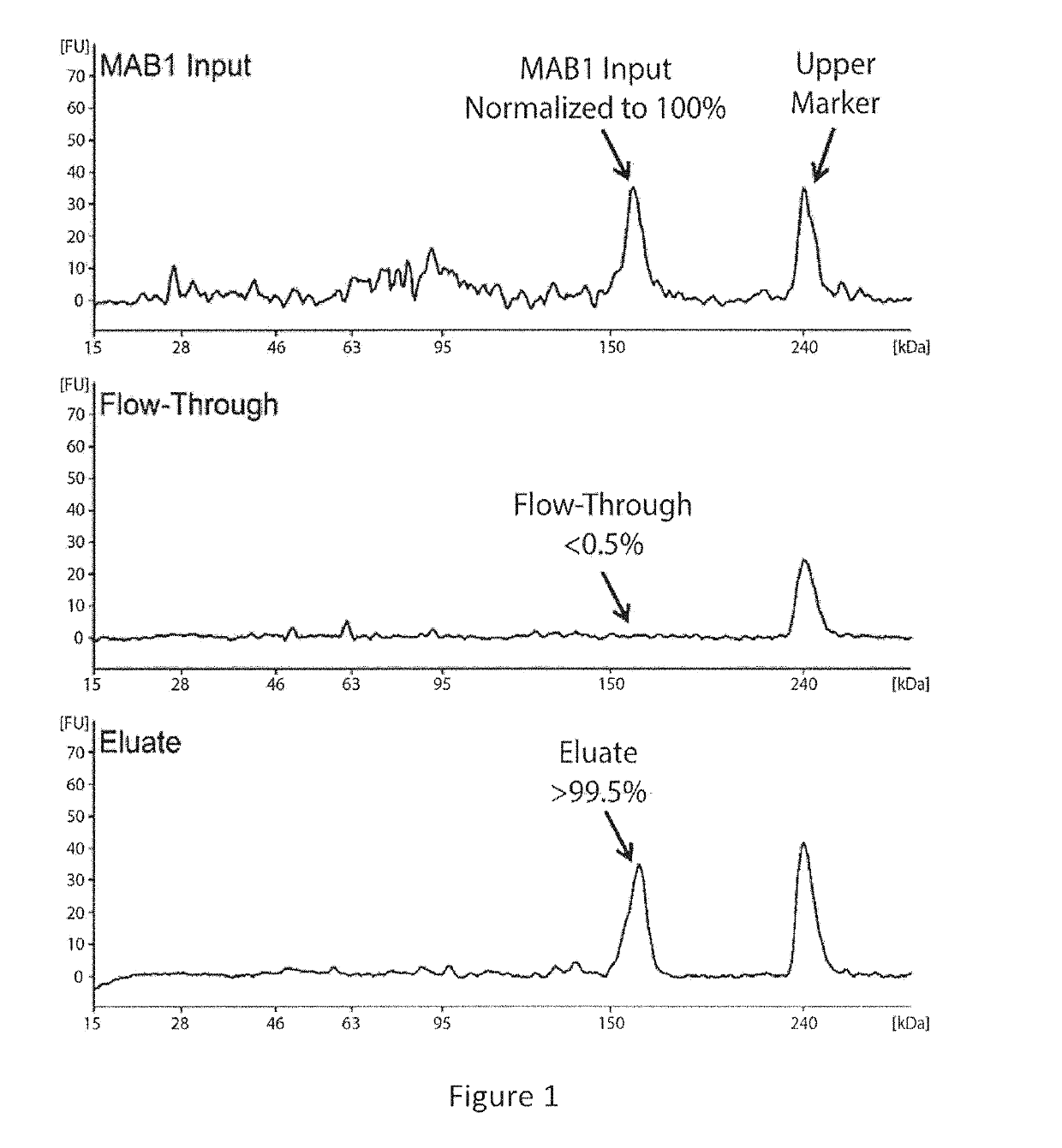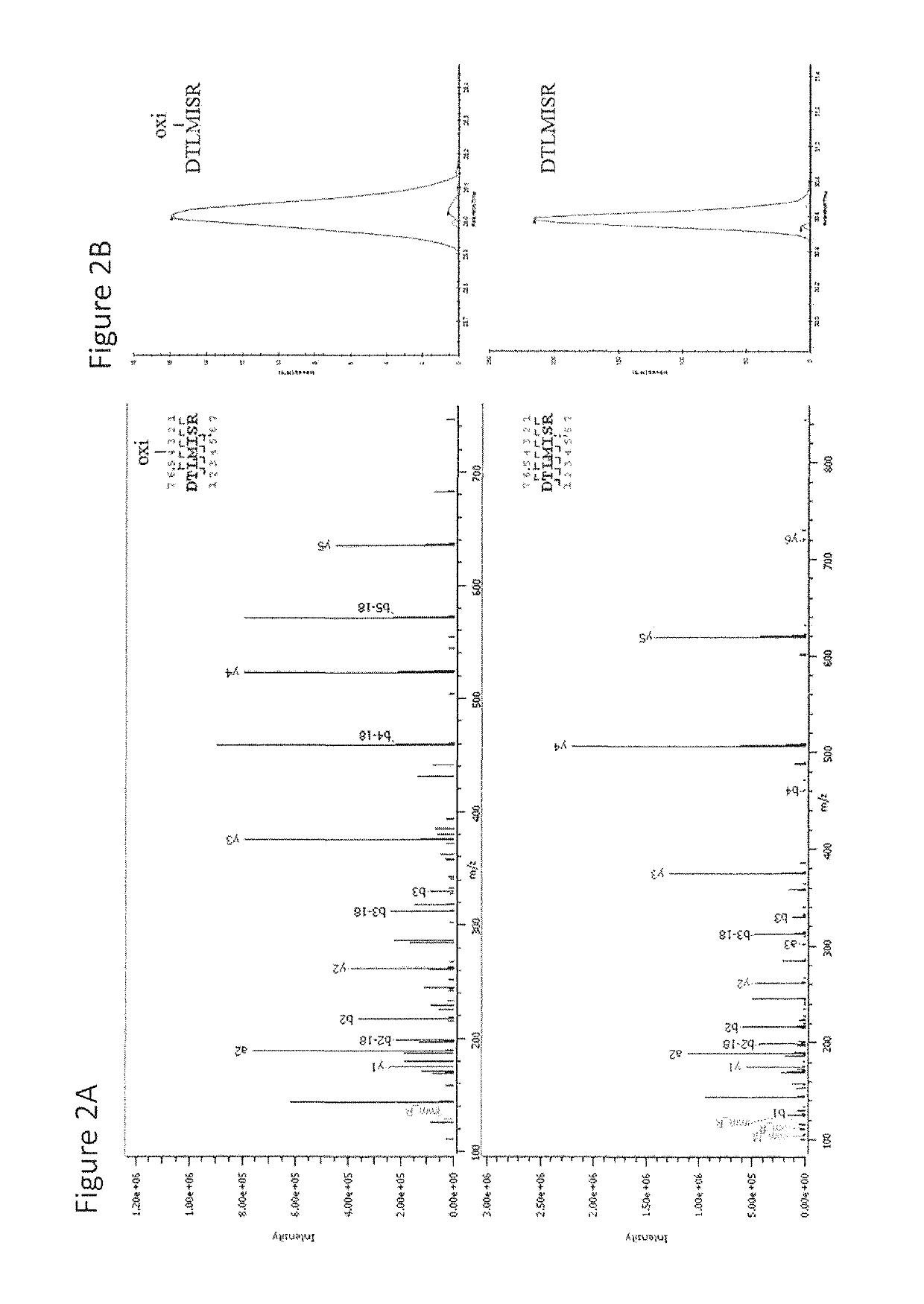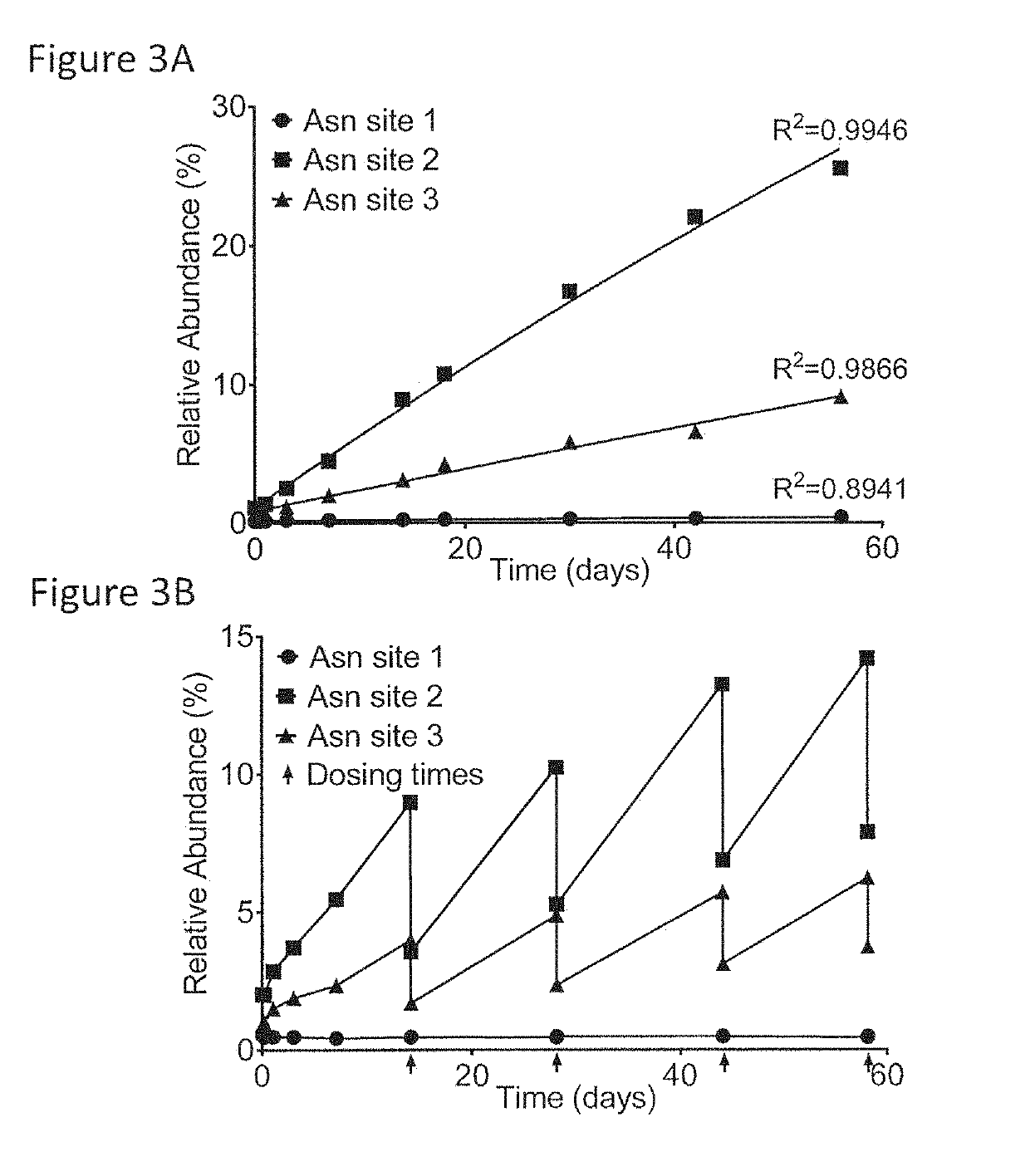Quantitation and Modeling of Quality Attributes of Therapeutic Monoclonal Antibodies
- Summary
- Abstract
- Description
- Claims
- Application Information
AI Technical Summary
Benefits of technology
Problems solved by technology
Method used
Image
Examples
example 1
Quantitation and Modeling of Product Quality Attributes of a Therapeutic Monoclonal Antibody in Single- and Multiple-Dose Monkey Pharmacokinetic Studies
[0101]This example describes the investigation of the number of PQAs of a therapeutic monoclonal antibody, MAB1, using monkey serum samples from single- and multiple-dose PK studies. With affinity purification followed by LC-MS / MS, a number of PTM attributes of MAB1 were assessed, including deamidation, oxidation, N-terminal pyroglutamate, C-terminal lysine removal, and high mannose glycosylation. In addition, models were built to simulate the in vivo progression of PTMs and subject's exposure to PQAs, which provides a quantitative approach to assess the criticality of the PQAs. Asparagine deamidation was used as a representative PTM attribute to evaluate the models. The subject's exposure to deamidated MAB1 simulated by the disclosed models was in good agreement with experimental results for both single- and multiple-dose studies.
[0...
PUM
| Property | Measurement | Unit |
|---|---|---|
| Temperature | aaaaa | aaaaa |
| Fraction | aaaaa | aaaaa |
| Fraction | aaaaa | aaaaa |
Abstract
Description
Claims
Application Information
 Login to View More
Login to View More - R&D
- Intellectual Property
- Life Sciences
- Materials
- Tech Scout
- Unparalleled Data Quality
- Higher Quality Content
- 60% Fewer Hallucinations
Browse by: Latest US Patents, China's latest patents, Technical Efficacy Thesaurus, Application Domain, Technology Topic, Popular Technical Reports.
© 2025 PatSnap. All rights reserved.Legal|Privacy policy|Modern Slavery Act Transparency Statement|Sitemap|About US| Contact US: help@patsnap.com



